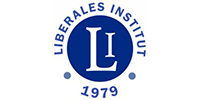The day Europe goes bankrupt
Behavioral scientists have observed that man as a species has developed an ability to ignore threatening or negative information. We tend not to look closely at bank statements showing debt or disturbing results of medical tests. Surprisingly, people with higher IQs are even more prone to this mental displacement than the less gifted. Such behavior could be called the ostrich principle. This does a serious injustice to the ostrich, which as any zoologist will confirm, does not stick its head in the sand when danger looms.
So with apologies to ostriches, we will still use this term to describe the shocking and nearly universal ignorance of the problem of Implicit Pension Debt.
By Implicit Pension Debt (IPD), we understand pension obligations that governments, including regional and local authorities, have incurred toward current and future pensioners. Most tax and accounting codes require companies to report such implicit debts on the liability side of the ledger as obligations. Not so with governments, whose accounting practices would under normal circumstances be considered as falsifying public accounts.
Six European countries have an implied pension debt exceeding 300 percent of GDP
One of the Maastricht Treaty criteria for adherence to the euro stipulates that public debt should not exceed 60 percent of gross domestic product. Anything above that level – and this is borne out by empirical data – is detrimental to sustainable economic development. Unfortunately, official figures already show the average debt-to-GDP ratio in the eurozone hovering close to 90 percent. Germany is also breaking the rules with a ratio of about 70 percent.
Now comes the shocking but consciously or subconsciously suppressed data about implicit pension debt. According to a recent study, six European countries – Austria, Finland, France, Germany, Italy and Poland – have an IPD exceeding 300 percent of gross domestic product. This includes three of the European Union’s four largest economies. Ten more European countries have ratios between 200 and 300 percent.
And the kicker? The data cited above are based on the present value of future pensions as of 2006. More up-to-date figures probably won’t be available until the end of 2017, when Eurostat is supposed to start publishing accrued-to-date pension entitlements statistics in its new European System of National Accounts.

Some of the European Union’s biggest economies could get crushed by pension debt
Back in 2006, two French journalists, Philippe Jaffre and Philippe Ries, published a novel called Le Jour ou la France a fait fallite (“The Day France went Bankrupt”). The book is brilliant in its foresight. It describes how France’s public debt inexorably rises until the day comes when creditors refuse to grant additional loans. The country’s debt is downgraded by the rating agencies and domestic banks, due to their high exposure to government bonds, become insolvent. The French economy stops working as wages go unpaid and the financial system collapses. To restore financing, creditors demand drastic measures. The novel culminates with Sotheby’s moving into the Louvre and auctioning its treasures, including the Mona Lisa.
In hindsight, one can only admire the two authors’ forward-looking realism. What they failed to anticipate, however, was the audacity of the European Central Bank. Through two mechanisms – quantitative easing (particularly the buying of government bonds) and the “target system” credit facilities – monetary policymakers have converted the debt of some high-spender countries into a liability of the entire eurozone.
Delayed collapse
The target system means that the ECB funds trades. For example, an exporter in one country is paid through his central bank. The ECB then gives a credit to this central bank and debits the importing country. The problem, however, is that Germany has now piled up 800 billion euros in target credits with the ECB. It will never be able to recover this sum, as the debtor countries will not be able to cover their debits. Thus, such transactions amount to hidden transfer payments with artificial money. Their effect is to delay financial collapse, at the cost of making the situation even worse.
The issue is no longer when France goes bankrupt, but when Europe does. The level of debt declared in the national accounts is already worrying. With implicit pension liabilities a multiple of that, it appears that a systemic implosion is unavoidable.
Just printing money is not a sustainable solution. A more sensible response would be to reduce the state’s role in the economy and to drastically streamline the regulations and controls that are stifling business. But nobody in power is proposing this, and even if they did, it might already be too late.
National insolvency could be triggered by an incident or accident, which in turn could lead to a European or even global contagion
The ostrich principle is irresponsible because it ignores the possibility of fiscal collapse and its economic, social and political consequences. What would these be?
In free societies with respect for constitutional principles, governments would need to sell off their assets – especially real estate and shares in state-owned companies. The Louvre auction is a dramatic example. But it would also mean a sweeping reorganization of the economy that would leave less room for the state and more for business.
More likely, the ostrich principle will continue to apply. In that case, national insolvency could be triggered by an incident or accident, which in turn could lead to a European or even global contagion.
In this worst-case scenario, political decision makers might decide to take the path of least resistance and confiscate or socialize private wealth. The effect of such autocratic measures would be to destroy prosperity and social cohesion, under the hypocritical banner of equality and justice.
To boost revenue for the profligate public sector, income controls might also be introduced. Europe would proceed – as Friedrich Hayek forecast – on the “road to serfdom.” Thirty years after the fall of the Berlin Wall, we will have arrived back at the economic and social model of East Germany.
Read the original GIS statement here ->
Opinion: The day Europe goes bankrupt
GIS is a global intelligence service providing independent, analytical, fact-based reports from a team of experts around the world. We also provide bespoke geopolitical consultancy services to businesses to support their international investment decisions. Our clients have access to expert insights in the fields of geopolitics, economics, defence, security and energy. Our experts provide scenarios on significant geopolitical events and trends. They use their knowledge to analyse the big picture and provide valuable recommendations of what is likely to happen next, in a way which informs long-term decision-making. Our experts play active roles in top universities, think-tanks, intelligence services, business and as government advisors. They have a unique blend of backgrounds and experience to deliver the narrative and understanding of global developments. They will help you develop a complete understanding of international affairs because they identify the key players, their motivations and what really matters in a changing world. Our experts examine the challenges and opportunities in economies old and new, identify emerging politicians and analyse and appraise new threats in a fast-changing world. They offer new ideas, fresh perspectives and rigorous study.

































